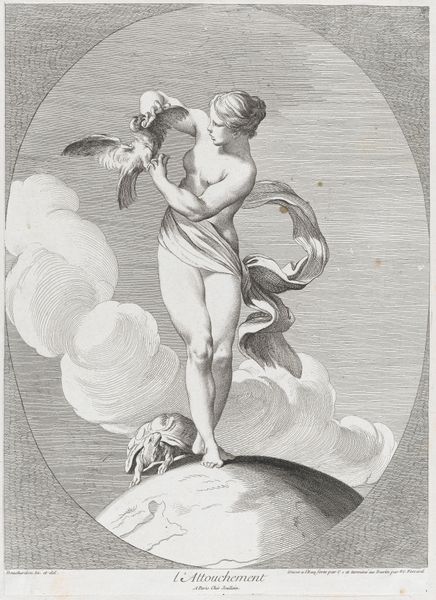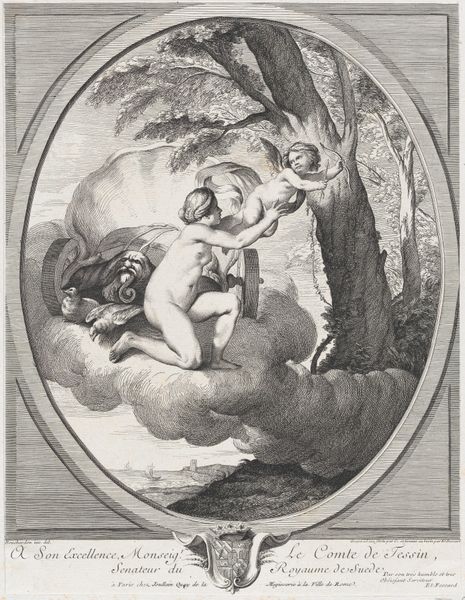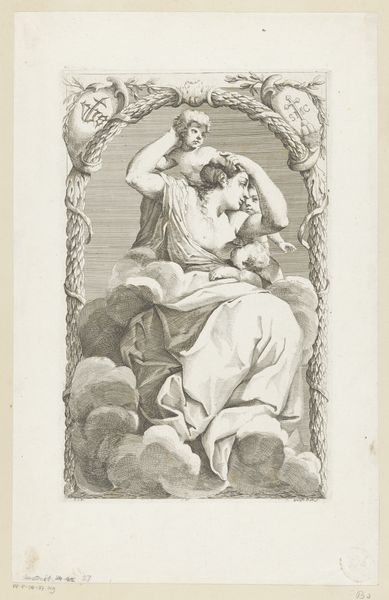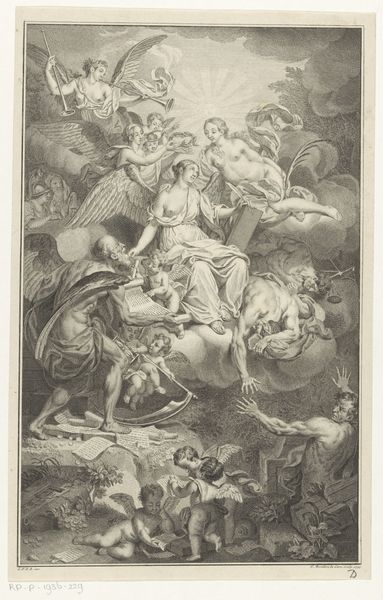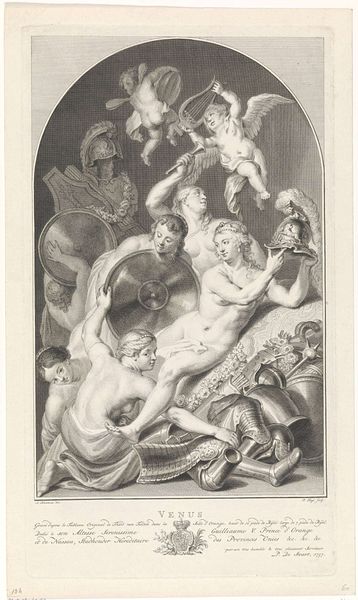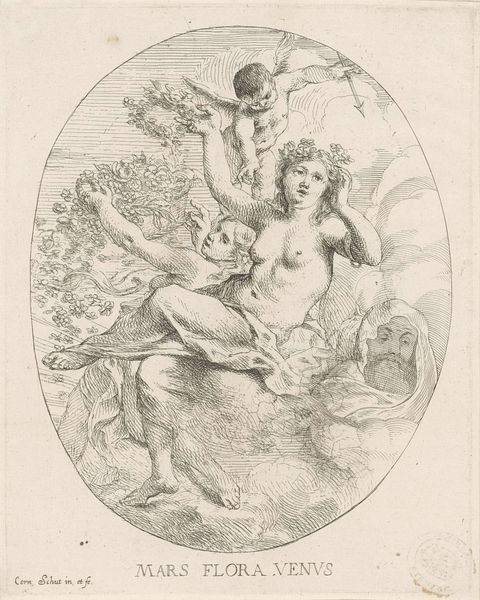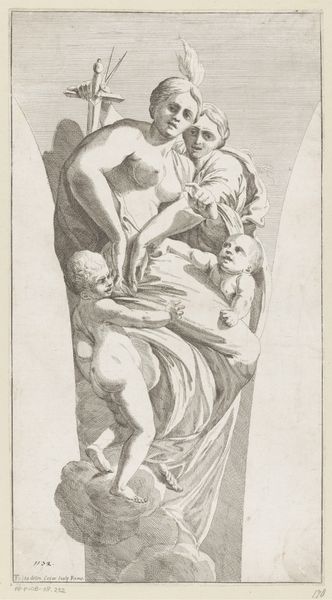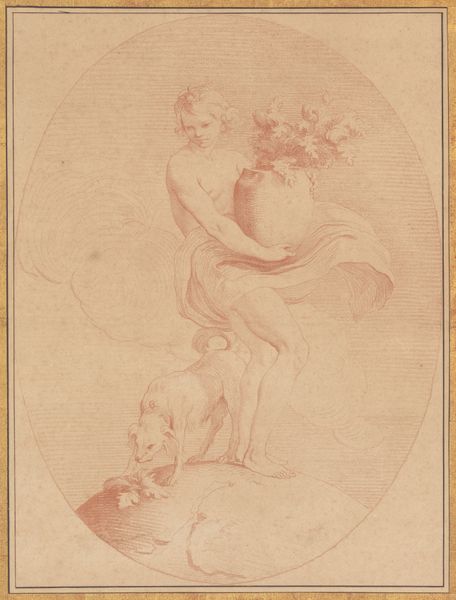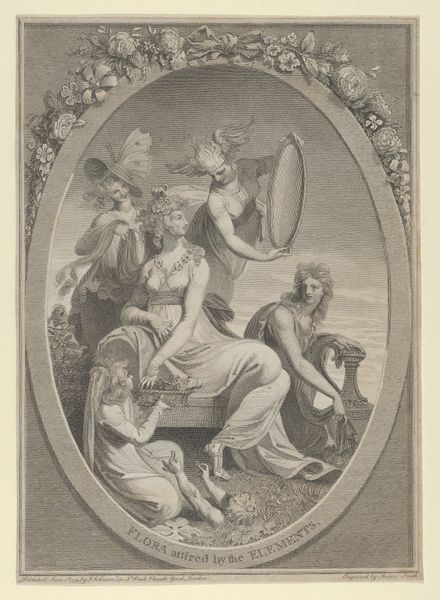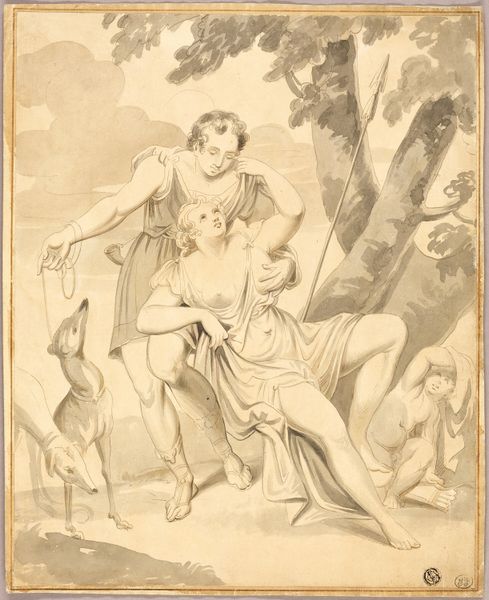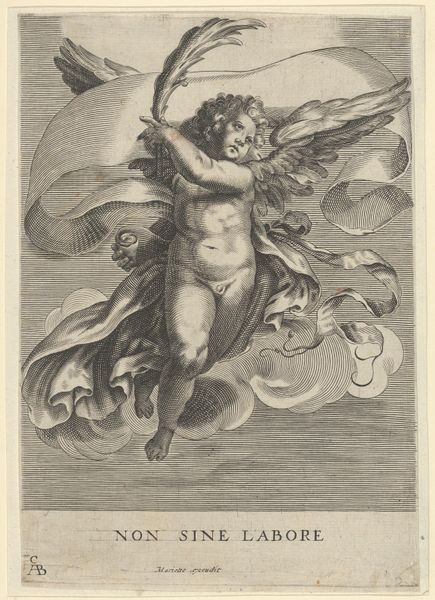
drawing, print
#
drawing
#
allegory
# print
#
dog
#
landscape
#
flower
#
male-nude
#
rococo
Dimensions: Sheet (trimmed): 15 9/16 × 11 5/16 in. (39.5 × 28.7 cm)
Copyright: Public Domain
Curator: Welcome. We’re standing before "Smell," an etching and engraving by Anne Claude Philippe, Comte de Caylus, dating from about 1730 to 1765. Editor: My immediate impression is ethereal. The allegorical figure almost floats, swathed in classical drapery against a backdrop that’s simultaneously terrestrial and otherworldly. Curator: Caylus's formal training certainly informed his rendering of the figure; we see a refined understanding of anatomy, highlighted by the precise use of line and shading to create depth and volume, set within an oval format common in Rococo decorative arts. Editor: The making of such prints intrigues me. The laborious process of etching and engraving onto a copper plate. Each line painstakingly incised to create these subtle tonal gradations… And let's consider the paper, its composition, how it takes the ink, the way prints such as these allowed for the mass dissemination of allegorical representations. It’s fascinating how a luxury item becomes a tool for spreading ideas. Curator: The composition cleverly interweaves several iconographic elements—the figure itself as a nude male, the vase of flowers symbolizing fragrance, and the dog, traditionally associated with the keenest sense of smell, grounding the composition and completing the allegory of scent. Editor: And consider the social currency this kind of imagery held. The idea of olfactory pleasure— tied into hygiene and class. Did access to pleasant scents also underscore societal stratifications? Curator: The work functions as more than mere illustration, I’d argue. Its sophisticated interplay between line and form and carefully balanced composition places it firmly within the context of high art and Rococo aesthetics. Editor: Yet, it also touches on popular culture—these prints were bought and sold, exchanged, and circulated. It reminds me that art practices don't exist within a hermetic bubble; prints played a critical role in a budding art market and a print like this has been produced using both highly-skilled labour and material substances such as acid and ink. Curator: I’m inclined to think it encapsulates a sophisticated and elegant visualization of one of the five senses. Editor: Well, this engraving not only engages with abstract artistic precepts, but simultaneously hints at more tangible societal connections, opening a way for us to ponder labor, access, class and taste.
Comments
No comments
Be the first to comment and join the conversation on the ultimate creative platform.
